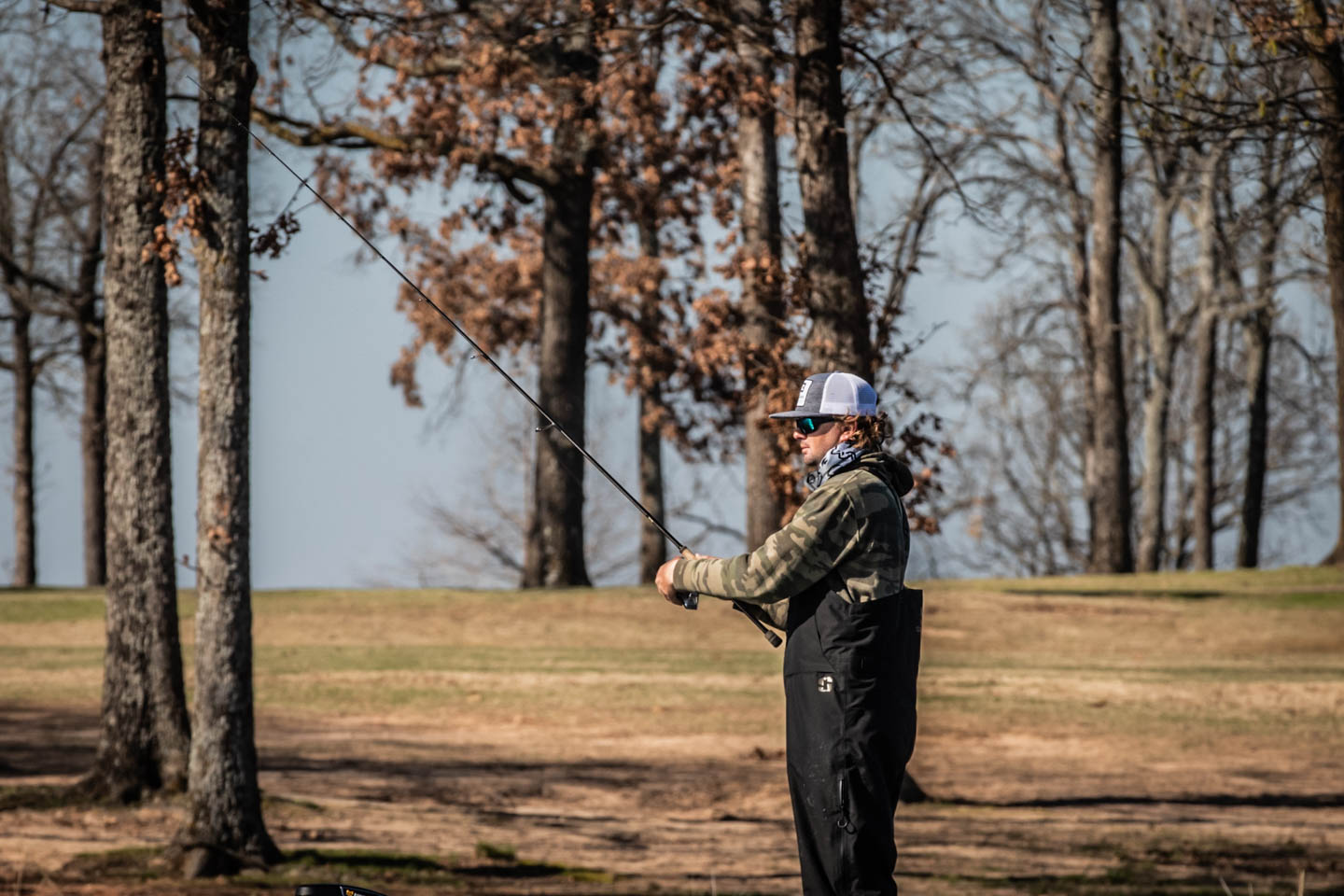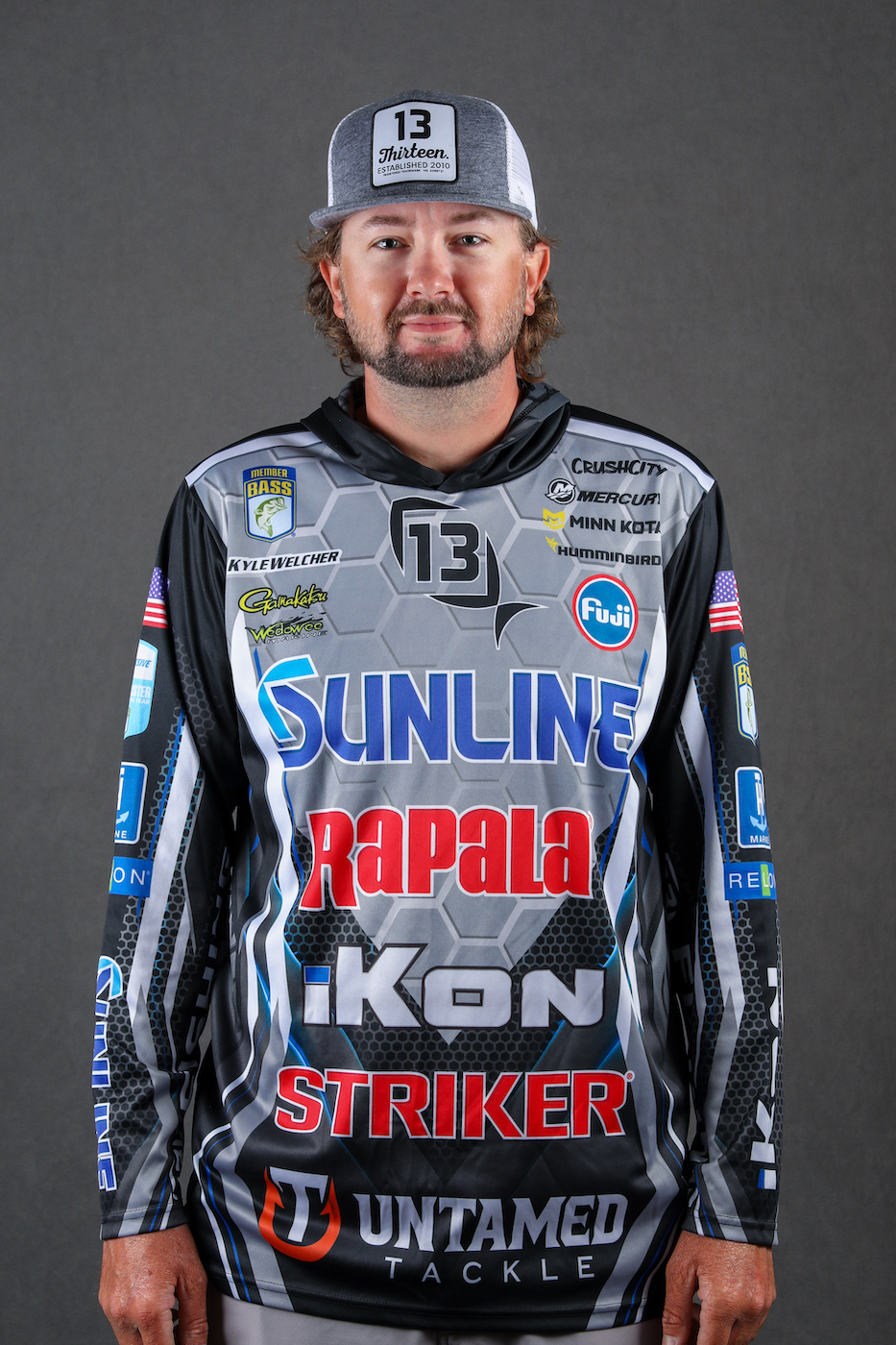
Spring is here, and you know what that means: cold fronts. Most bass anglers dread cold fronts. They always seem to line up perfectly with the biggest tournaments on your favorite lake. But the whole deal with cold fronts during the prespawn and spawn is to use them to your advantage instead of letting them spin you out.
First, it’s important to understand the cyclical nature of fronts in the spring. Over the course of four to six days, a cold front cycles through an area before a new front starts the cycle all over again.
The best days are those moderate days in between fronts. It’s the warmest, most stable part of the cycle. The air temperatures are warm, the wind is low, and the barometer has leveled out.
As a new front approaches, the south wind picks up, the pressure starts to drop, clouds start to increase and humidity goes up. As the front hits, it brings dark skies, storms, rain, hard south winds and a drop in pressure.
After the front passes, the wind shifts from the South to more out of the West and then Northwest. The skies clear, the temperature drops, and the pressure begins to rise. What follows is the worst part of a front: the teeth of the front, so to speak. The wind howls out of the north, water temperatures bottom out and clear blue bird skies result.
These conditions on the backside of the front can go on for a couple of days before the conditions finally begin to moderate. With that, the wind starts to lay, the high pressure dissolves and the biting cold subsides. Finally, the wind will calm, and the sun will actually feel warm again. Daytime highs rise and nighttime lows don’t crush the water temperatures. Humidity builds back in, and the cycle stabilizes until the next front approaches.
Staying in tune with these different segments of a front and changing your fishing pace and presentations is the key to adapting to frontal cycles. How the days of a frontal cycle happen to overlap with the days of a tournament are critical to tournament strategy. So here is a closer look at how I change my approach for each part of a frontal cycle.
I’ll start in the cycle with the moderate days between fronts. These are the premium fishing days in the spring. It’s warm, calm, comfortable, and the fish are usually biting. These are the days I pick up my fishing pace and throw a lot of winding search baits like swim jigs, buzzbaits, topwaters. and lipless rattlers – I am just looking to take advantage of the positive conditions.
My primary goal is to cover water and make hay while I can. If it’s practice, I want to get as many bites as possible to find the better concentrations of fish. If it’s a tournament day, I want to catch as many as possible. I’ll even try new areas to keep exploring. During this time, it’s common to catch a lot of fish that are the average size bass for the lake – I call them cookie cutters. And I usually have to go through a lot of them to upgrade.
Once the skies darken, the south wind starts to really blow, and the rain starts, I’ll still keep up a brisk fishing pace in terms of covering water. But I’ll go to search baits with more vibration like a vibrating jig, spinnerbait, a bigger buzzbait or crankbait – something that helps the fish find the bait in the heavy cloud cover, wind and rain.
After the front has passed, the wind shifts out of the west, and the temperature begins to drop. I’ll still stick with the faster pace moving baits as long as I feel like the front has not impacted the fish yet. But once the wind gets some north in it, the air temperatures plummet, the water temperatures crater, the skies are bright blue and the barometer begins to rocket back up, I’ll make a hard transition in my approach.
At this point, everything in the fish’s world has done a 180 – the wind direction, the surface temperature and barometer are all going the opposite direction than they were 36 hours ago. The fish have to reposition to some degree to adjust to these changes.
The abrupt change I make is to slow way down and go into survival mode. I switch gears from a run-and-gun mentality to a pick-it-a-part mentality. I’ll get in my best areas, hunker down and go with more vertical lures like a jig or shaky head – something that goes to the bottom. I try to slow everything down, including my lures. Instead of a 1/2-ounce jig, I’ll drop to a 3/8 ounce. Instead of a 1/4-ounce shaky head, I’ll go to a 3/16 ounce, or even 1/8 ounce.
It just seems like the whole underwater world slows down in those post-front conditions. Things are more lethargic, so I fish my baits that way. It also seems like on severe post-frontal conditions the fish will sulk down to the bottom more. I’ll still wind a little bit with a crankbait that grinds the bottom. I want something that gets into the nooks and crannies where bass seem to sulk down into. I’ll go to more repetitive casts to key pieces of cover I know fish are using.
I also prefer cover closer to deeper water in this situation. If I’ve been fishing up on the flats, I’ll back off to the first breaks. In fierce post-frontal conditions, it seems the number of bites goes down, but the chances of catching a really big bass goes up. I’ve always caught my biggest bass during the prespawn in this part of the frontal cycle. This is when focusing on just getting a few quality bites per day is better than trying to catch numbers.
Once the front moderates and we get that first day when the wind quits and the sun starts heating that top layer of water up again, I switch lures again to more subtle actions, especially in clear water. This is when I lean on a wacky rig a lot and I’ll put a swim jig back into my rotation. Floating worms can be deadly in this window too.
When we get three or more days past the frontal passage, I’ll go back to fishing faster with winding baits again to find out how the fish have changed. It seems with every frontal passage the fish reset, and a different pattern will emerge during the moderation days. Sometimes it gets stable enough to where the fish will actually start making beds. Or the first hints of a shad spawn will start to develop. Every time a front passes and the weather moderates, the fish will start to do something different. If you can tap into that change before the competition does, it can put you way ahead of the curve.
Indeed, cold fronts can be nuisance in the spring, but changing in step with each part of the passage is the key to staying bit throughout the whole cycle.





